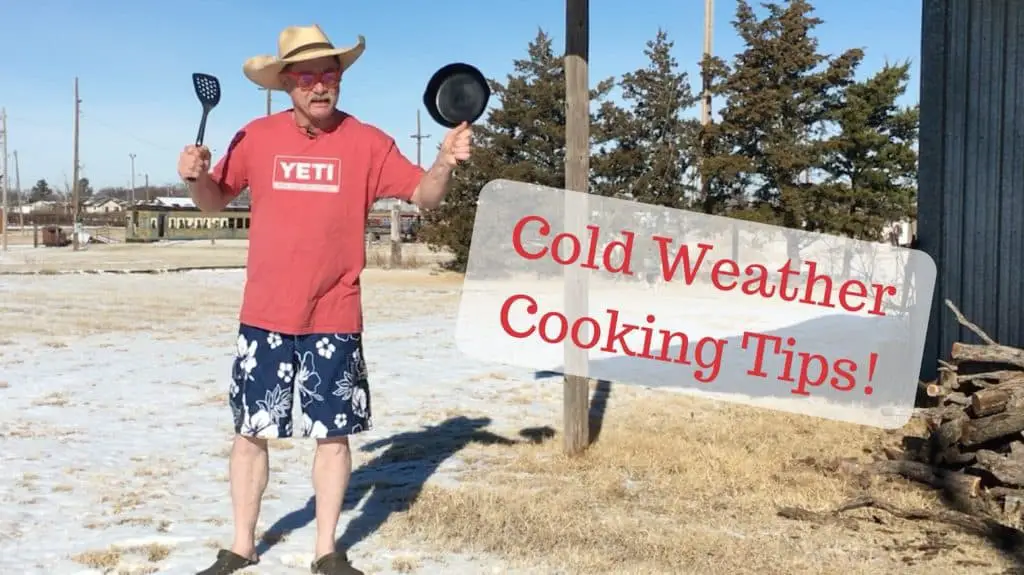Cold weather cooking tips for Dutch oven cooking part 2

Dutch Oven Tip #1:
Prep Your Ground. Before you place your Dutch oven on the ground to cook on you need to warm the ground. Rake off any snow or debris, make it level and then place a shovelful of coals on the ground to allow the ground to warm and/or dry out. If you place a Dutch oven on cold ground, place coals around it and begin cooking- that cold ground is going to suck all of that heat away from the coals and you won’t be cooking as well.
Dutch Oven Tip #2:
Gradually warm and cool cast iron. You don’t want to put cold cast iron on a cooking heat right away because it may cause it to crack or warp. Gradually warm cast iron before cooking in it. The same goes for cooling it. Don’t finish cooking something in it and then place it directly next to a snow bank. Allow it to cool gradually before storing, etc.
Dutch Oven Tip #3:
Remove old coals before cooking. Now you heard me mention before that you need to warm your ground before cooking. Well, before you put your Dutch oven on the ground to cook, now that you have pre-warmed it, you need to remove those old coals. Removing the coals will allow you to start with a fresh batch when cooking and you’ll know exactly how much new heat you have.
Dutch Oven Tip #4:
You don’t need to start with more coals. Folks often think that in cold weather you need to start with a lot more coals to cook with. False. You’ll add the same amount of coals you would normally, but the difference is you may need to add a few more coals as you go along if the cold weather steals some of your heat and causes it to burn out a little quicker. Adding a lot of coals at the beginning may just cause you to burn food.
We preheated the ground, we pre-warmed our oven. So you may have to add a few coals as you go along. But don’t start out with no heap in helping, you’ll end up with burned biscuits.
Watch the How-To Video
